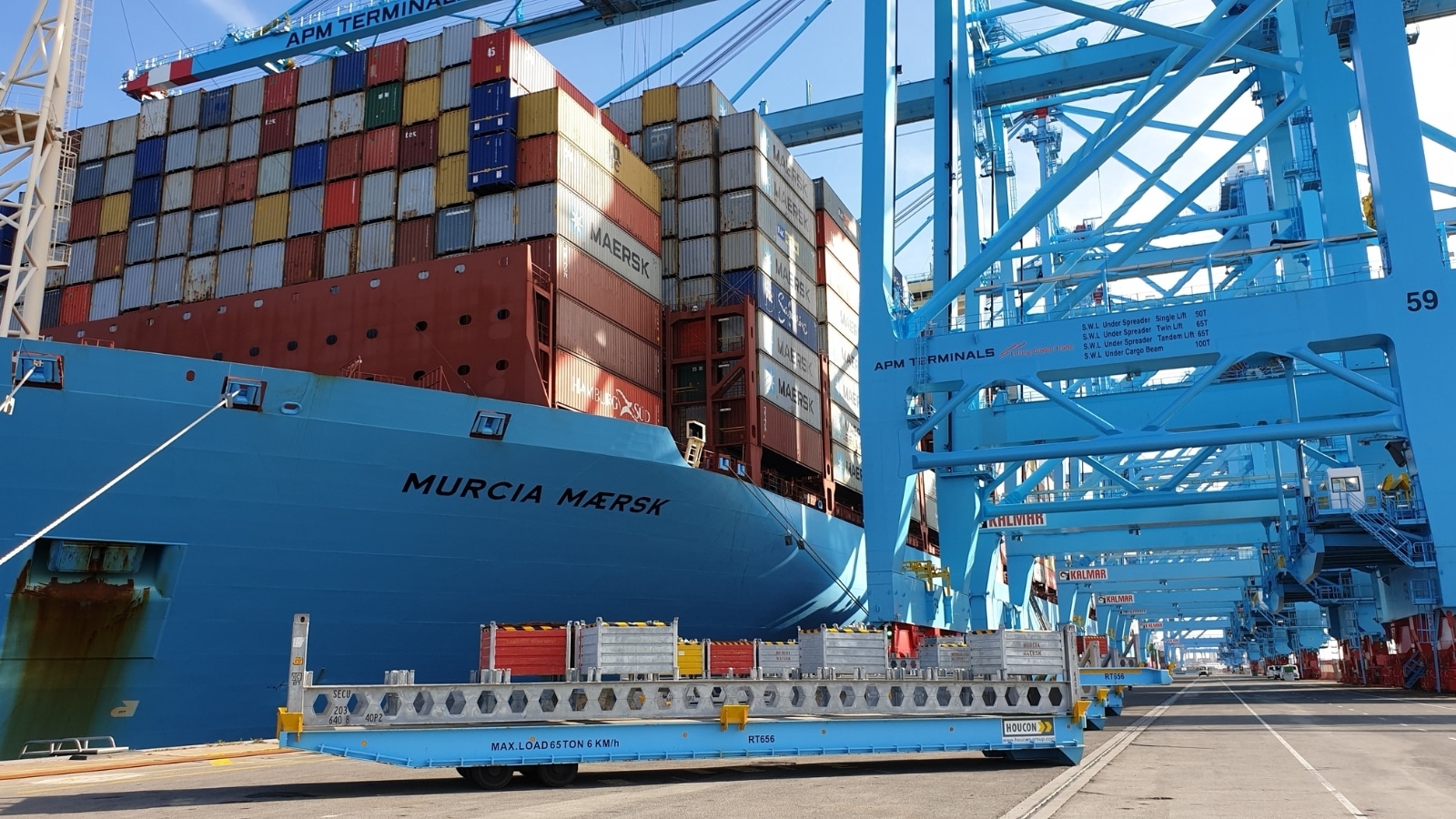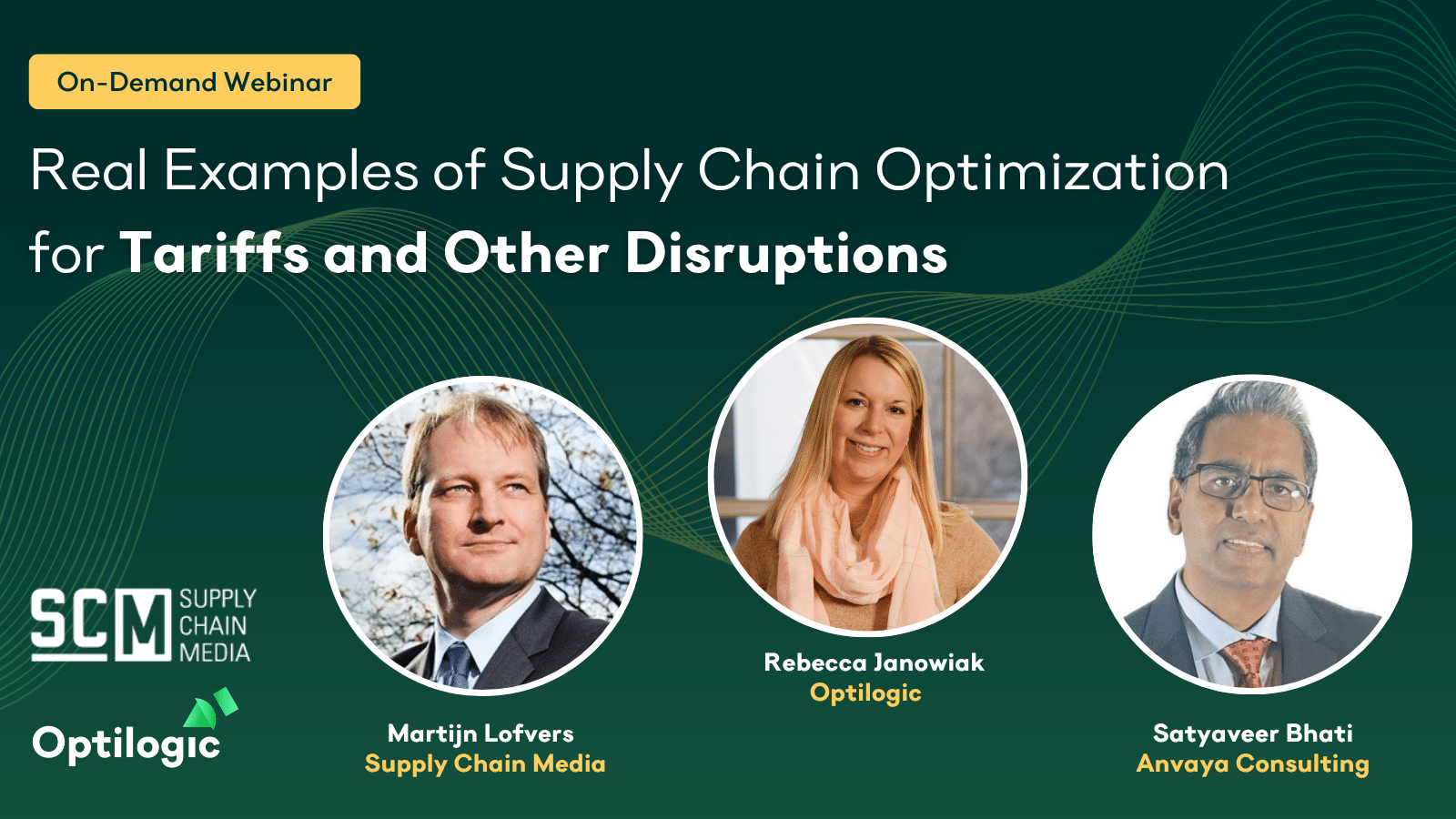Blog
Industry Guide to Supply Chain Network Design
PUBLISHED ON:
May 23, 2023

Subscribe to Receive the Latest Supply Chain Design Resources
If your business has a physical supply chain, supply chain network design is central to your success. By understanding and optimizing supply chain network design, you positively impact every aspect of your business. Read on to learn the goals, benefits, and best practices of supply chain network design that will help your organization thrive.
1. The Goal of Supply Chain Network Design
2. Benefits of Supply Chain Network Design
3. The Top Trend in Supply Chain Network Design
4. Best Practices for Supply Chain Network Design
- Ease of Entry and Platform Capabilities
- An Established Center of Excellence
- Data Analysis, Extraction, and Manipulation
- Scenario Modeling in Supply Chain Design
- Network Design for Sustainability
The Goal of Supply Chain Network Design
The goal of supply chain network design is to evaluate your supply chain and identify where you can make improvements or optimize for cost avoidance. Our mission at Optilogic is to help organizations improve the processes and cost efficiencies within their supply chain while identifying and evaluating constraints.
Your supply chain network and needs are as unique as your business. Some variables and constraints can be changed to enhance your network design, and some can’t. Optilogic can identify both to determine areas of optimization within your supply chain and guide you forward.
Benefits of Supply Chain Network Design
When executed strategically, your supply chain design (SCD) provides immeasurable value and benefits to your business. We list a few of those benefits below:
- Identify areas that can be streamlined, resulting in cost savings
- Reduce purchase and inventory costs
- Reduce working capital
- Reduce transportation costs
- Optimize transportation routes according to time, cost, and environmental impact
- Reduce fixed costs, including facility and equipment costs
- Reduce variable costs, including labor and 3PL costs
- Optimize service levels and delivery dates to improve customer satisfaction
- Understand cost visibility across your network
- Compare capabilities and costs against benchmark data
Many legacy organizations structure supply chain networks using antiquated systems like Excel spreadsheets or rely on historical data or instinct to make these crucial decisions. In today’s marketplace, you need modern SCD solutions that keep up with the ever-changing fluctuations and disruptions in the global supply chain. Modern SCD platform utilization allows you to reap all the benefits above –– and more.
Speed to Solution: The Top Trend in Supply Chain Network Design
The demand for speed to solution is today’s most pressing issue for supply chain network design. A weak supply chain can destroy an organization. Businesses need data-driven insights that guide strategic network design Optilogic delivers that data across your organization so you can set up your teams –– and business –– for success.
Traditionally, the process has been sequential when analyzing supply chain network design: you start and complete one aspect of the analysis before moving to the next. This method of network design consumed valuable time and energy, providing results weeks or even months after the start of the evaluation.
Today, organizations want speed to solution in supply chain network design. Supply chains have become increasingly fragile, with disruptions possible at every juncture. Companies must implement network design solutions that provide a high-level view of their supply chain, highlighting areas for improvement and optimization. And they need this data fast.
Modern companies and organizations need agility in supply chain design, and Optilogic’s Cosmic Frog delivers. Optilogic’s platform enables hyperscaling to run hundreds of scenarios simultaneously. Instead of waiting weeks for results, you can view network design scenarios nearly instantly. Our solutions increase efficiency and accuracy in two ways: running multiple scenarios simultaneously and solving much faster than other legacy applications operating in the market.
Read: Optilogic Cosmic Frog Network Optimization Runs 40% Faster than Competitor Solutions
But speed-to-solution supply chain design is more than running an application and compiling data. The information is useless until it’s distributed across your organization so the appropriate parties can put that data to use.
Optilogic allows dashboards to populate for individuals within your organization without requiring them to understand the application run. They can ask questions and receive results exponentially faster than traditional network design analysis methodologies. Instead of waiting on a modeler to assemble the information, digest it, and communicate it within your organization, your team receives instant results from Optilogic’s scenario modeling solutions.
Best Practices for Supply Chain Network Design
Optimizing a supply chain network design for today’s market requires organizations to keep abreast of industry best practices. Read along as we explore best practice elements in supply chain network design.
1. Ease of Entry and Platform Capabilities
Organizations need SCD solutions that provide ease of entry. If your platforms aren’t accessible, they’ll be useless to your team. You need supply chain network design with ease of entry that meets your unique needs, and you want a platform that can preemptively deliver the design solutions you seek.
You can only optimize your supply chain insofar as your platform can provide the solutions and answers you seek. What questions can your SCD platform answer?
Bottom line: if you have a supply chain what-if question, Optilogic can answer it. When you consider the unique product movements within your supply chain, you need SCD that can analyze, guide, and support you every step of the way. Optilogic does all the above while providing exceptional support for your teams.
2. An Established Center of Excellence
The most effective companies have an established center of excellence. This team provides leadership, best practices, research, support, and training for your organization. In many ways, your center of excellence (COE) drives your organization’s culture and success, so it’s crucial that you strategically create and develop your team.
Building your COE
Your center of excellence is not merely a group of analysts that know how to model or write code. Effective COEs require in-depth business knowledge and expertise from various backgrounds and experiences within your industry, e.g., individuals from finance, transportation, and production working together to contribute to your COE.
Once you’ve identified experts within your organization, teaching them to model for SCD allows you to create a holistic powerhouse of expertise.
Establish authority and trust across your organization
The advantage of utilizing in-house experts means you have access to the business knowledge required to succeed within your market. And when it’s time to present this back within the organization, you gain tremendous credibility. Because your COE has proven themselves within their field, they can engage and communicate with authority, and you can achieve the solution much more efficiently and effectively. You don’t have to validate the findings with every department because you include respected and proven experts within your COE.
Provide training opportunities
Once you’ve established your COE, you must provide training opportunities for members to gain experience in modeling at a realistic and sustainable pace. If you teach people within your organization how to model, they’ll be able to handle most modeling questions that arise.
Provide career advancement within your COE
A strategically crafted and nurtured COE can provide infinite value for your organization. These individuals understand the business side of what you do. And now that they know the process necessary to change processes (and make those changes), they provide even more value to your business. Providing career advancement opportunities for COE members can enhance your organization at every level.
Data analysis, extraction, and manipulation
Organizations need extensive data to optimize their supply chain network design. Unfortunately, many businesses don’t have the necessary data to execute effective SCD.
Data is never perfect, and it’s always fragmented. Organizations must stitch information together in a way that makes sense to the organization and utilize it to answer questions and guide decision-making.
As you consider data management, ask yourself the following:
- What questions are you trying to answer?
- How can you align existing data to answer those questions?
If you approach data within SCD this way, you manage expectations once you run scenarios and acquire analytics.
Optilogic makes it simple to use fragmented data to run a simple SCD model. If you’re beginning to explore SCD and don’t have access to a high volume of data, our platform can transform even basic data to deliver analytics that can guide you to the next best step for your organization.
4. Scenario Modeling in Supply Chain Design
When you solve supply chain models, you explore various supply chain scenarios. By removing constraints from your baseline or historical view, you can explore how altering those restrictions will affect your costs, volumes, and profits.
Scenario modeling allows you to create a utopic view of your supply chain to visualize various scenarios for your organization’s supply chain network. Then when you add different constraints, you can see how those constraints affect cost. Are some of your existing controls able to be altered? If so, how can that affect your bottom line?
Supply chain simulation within SCD provides total network perspective and highlights areas where you can improve your practices.
5. Considering Risk in Supply Chain Network Design
Widening your lens to consider potential risks to your network allows decision-making that addresses financial and resiliency business objectives. Cosmic Frog provides a risk rating on every scenario, enabling users to measure and quantify risks at the Supplier, Facility, Customer, and Network levels.
6. Network Design for Sustainability
Two decades ago, sustainability in supply chain management wasn’t a concern. Today, it’s essential. Consumers demand sustainability, and organizations must identify realistic sustainability solutions that promote environmentally friendly practices without decimating their bottom lines.
But because many companies don’t have data regarding their carbon footprint or sustainability, they don’t know where to begin regarding supply chain network design.
Optilogic’s platform empowers you to prioritize sustainability at all stages of your supply chain: warehousing, material origins, production, transportation, and more. We help you balance sustainability against other crucial factors, like time- and cost-effectiveness, to create a supply chain design that works for you.
Is Your Supply Chain Network Designed for Resiliency?
Optilogic helps you identify and quantify weaknesses in your supply chain, highlight the potential for cost avoidance, and create a more streamlined, sustainable, and profitable supply chain built for resilience. Optilogic Cosmic Frog is the only supply chain design platform that balances financials, service, and risk—in a 100% SaaS-based environment.
Ready to get started? Create your free account and contact us for help along the way.
Grow Your Knowledge
Real Examples of Supply Chain Optimization for Tariffs and Other Disruptions
Learn how supply chain leaders are proactively optimizing for tariffs and disruptions. Hear from experts at Optilogic and Anvaya Consulting for real-world strategies and tools to redesign your network with confidence.




